British Museum: An Artist's First-Timer Guide to London's Global Art & Inspiration
Explore London's British Museum with an artist's eye. This guide offers first-timer tips, highlights iconic art and hidden gems, delves into ethical dialogues, and sparks creative inspiration.
The British Museum: An Artist's First-Timer Guide to London's Global Treasures, Ethical Dialogues & Creative Inspiration
As an artist, my mind is usually a whirlwind of compositions and color palettes. But the moment I stepped into the British Museum, that whirlwind momentarily silenced, replaced by a profound, humbling 'Whoa.' It wasn't just the sheer scale, but the colossal weight of human history, the countless stories whispered by objects from every imaginable civilization. Utterly magnificent, and utterly humbling. This overwhelming grandeur, while magnificent, is precisely why I wanted to distill my own experiences into this guide, translating that initial awe into actionable insights for fellow creatives. My goal isn't just to help you navigate its treasures without feeling swamped, but to offer a personal, artist's perspective, hoping you'll find your own wellspring of creative inspiration amidst millennia of human ingenuity, ongoing archaeological discovery, and the complex ethical dialogues that museums like this inherently embody. It's a journey, not merely a visit.
Before You Even Step Foot Inside: My Pre-Visit Pep Talk for Creatives
That initial 'whoa' feeling is precisely why, despite my often-chaotic studio (which, let's be honest, sometimes resembles a particularly energetic abstract expressionist piece), I've learned that a little foresight for places like the British Museum goes a very long way. It's akin to preparing your canvas and mixing your paints before diving into a major work: a little upfront planning saves so much wasted energy and prevents those inevitable weary shuffles, as I've learned from painful experience. Trust me, I once tried to 'wing it' – thinking spontaneity was my muse – and ended up lost, exhausted, and missing half the things I wanted to see. Lesson learned.
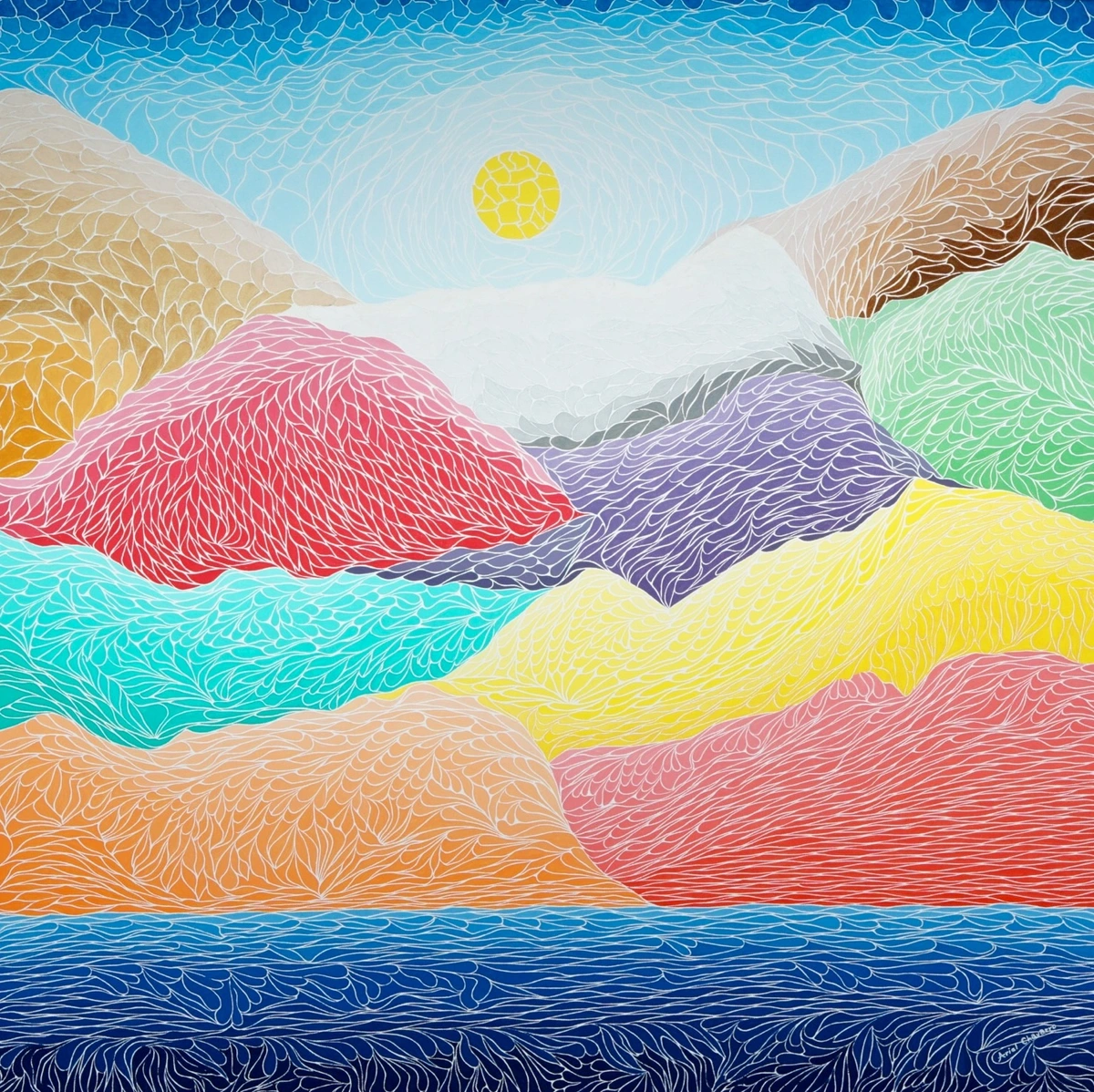
https://commons.wikimedia.org/wiki/File:The_Creation_Of_The_Mountains.jpg, https://creativecommons.org/licenses/by-sa/4.0/deed.en
"Do I Really Need a Plan?" (Yes, I think you do.)
Absolutely. While general admission to the British Museum is incredibly free – a testament to its mission as a public institution, supported by the government and donations – timed entry tickets are often required, especially during peak seasons. Always check their official website for the latest booking information. This system, I've found, enhances the experience by managing crowd flow and reducing overwhelm. I once scoffed at plans, thinking spontaneity was the soul of travel. That British Museum trip ended with me aimlessly wandering for an hour, missing half the exhibits I actually wanted to see, and feeling utterly defeated. Learn from my mistake: pick maybe three or four collections or exhibits that genuinely pique your interest. Trying to see everything in one go? That's like trying to capture the entire spectrum of human emotion in a single brushstroke – admirable, perhaps, but ultimately exhausting and likely to leave you feeling more defeated than inspired. Focus on quality, not quantity. Remember, if you tried to see all the art capitals of the world in one weekend, you'd just burn out, and the same goes for a museum of this scale.
Quick tip: The museum is generally open daily from 10:00 to 17:00, with late openings on Fridays until 20:30. Always double-check their official website for current hours, holiday closures, or special event timings before your visit. No one wants to arrive at a closed museum, trust me!
Coffee and Comfy Shoes: Your Best Friends
This isn't a fashion show, friends. Your feet will thank you. I once made the mistake of wearing somewhat stylish but terribly uncomfortable boots to a museum, and by the time I reached the fifth gallery, I was basically doing a weary shuffle. Learn from my errors! Also, fuel up. There are cafes inside, of course, but a good coffee beforehand can really set the tone. It's a marathon, not a sprint, through millennia of human ingenuity and countless steps. Trust me, you'll need both your wits and your comfortable footwear.
Best Times for Creative Contemplation
For us artists, avoiding the maddening crowd can make all the difference. I've found that weekday mornings, right after opening, or late afternoons (especially on Fridays when they have extended hours) are ideal. Fewer people mean more space to breathe, to really look, and to maybe even pull out a small sketchbook without feeling like you're blocking traffic. The quieter moments allow for a deeper connection with the art, letting your mind wander and make those crucial creative connections without interruption. With these practicalities sorted and your mind ready, it's time to finally step through those iconic imposing columns...
Stepping Into History: Architecture and First Impressions
...and into the heart of the British Museum. The buzzing anticipation in my chest always builds to a crescendo right at this threshold, knowing I'm about to cross into realms of ancient wonders. And there it is again: that monumental scale, that dizzying sense of history, now within reach. Take a moment. Just breathe it in. It's truly spectacular, a testament to intricate architectural ambition with its vast neoclassical façade and the awe-inspiring Great Court. Designed by Sir Norman Foster and opened in 2000, this glass-roofed marvel is the largest covered public square in Europe, transforming the museum's internal space and serving as a perfect prelude to the human stories held within.
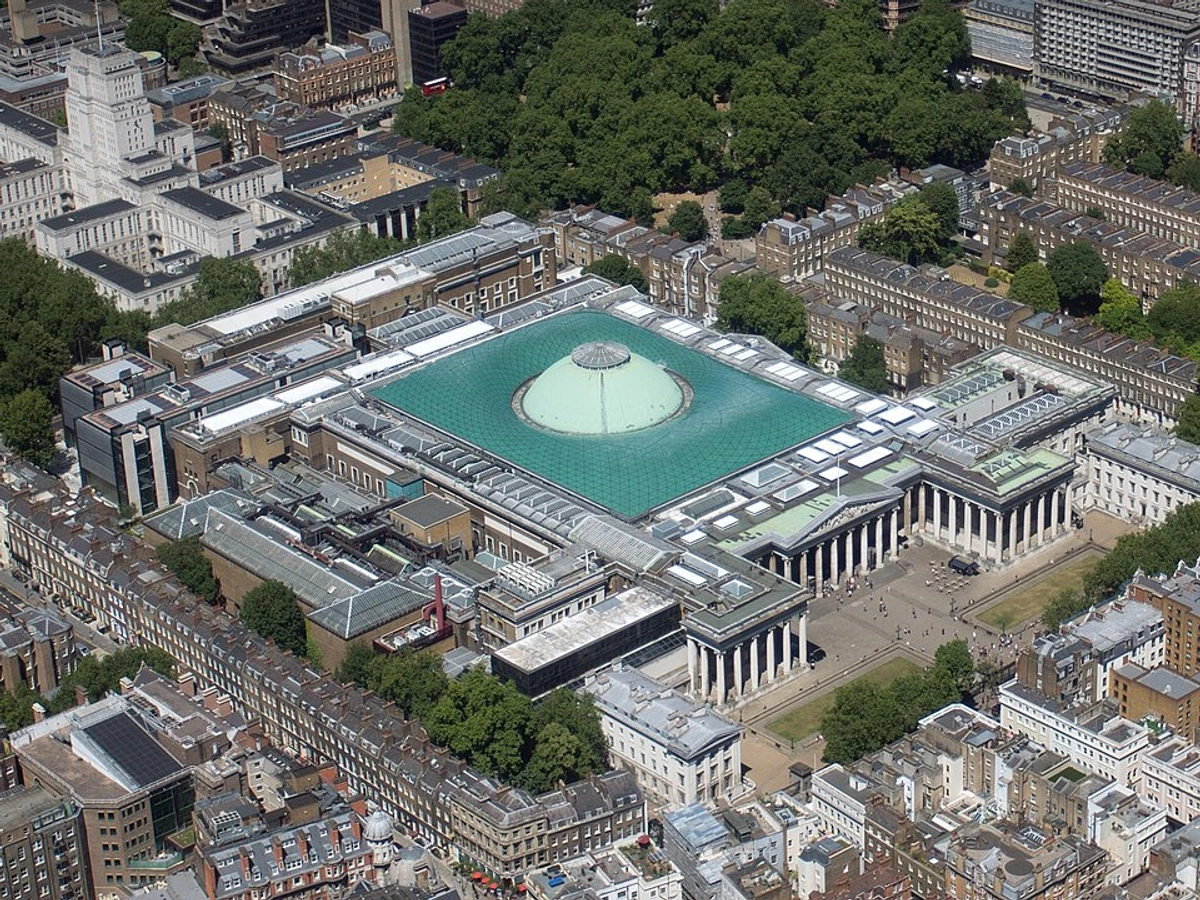
https://commons.wikimedia.org/wiki/File:British_Museum_%28aerial%29.jpg, https://creativecommons.org/licenses/by/2.0/deed.en
My first move, after the initial jaw-drop, is always to grab a physical map. Yes, in this digital age, a piece of paper sometimes feels like a superpower, especially when your phone battery is inevitably deciding to call it a day after too many photo ops. The museum is intuitively laid out, but a map helps you navigate those chosen three or four collections without too much backtracking. And hey, getting a little lost can lead to wonderful, unexpected discoveries, so don't be rigid! With the initial awe settled, it's time to dive into the specific treasures that have captured my artistic imagination.
My Artist's Must-Sees: Iconic Works That Stir the Soul
Even with a selective approach, some things are just... iconic. They're popular for a reason, and I honestly think they live up to the hype. Consider these the undeniable headliners of the most incredible historical rock concert ever, and often, a great starting point for any visit. For me, as an artist, these pieces often represent the pinnacle of human creativity and problem-solving, a dialogue across millennia that continues to inspire my artist's timeline.
The Rosetta Stone: My "Aha!" Moment
This is usually my first stop, if only because it feels like the ultimate key. Standing before the Rosetta Stone, I remember feeling a genuine chill. It's not just a slab of granodiorite; it's the linguistic bridge that allowed us to finally understand ancient Egyptian hieroglyphs. Discovered in 1799 during Napoleon's Egyptian campaign, its subsequent acquisition by the British (following the French defeat) marked a pivotal moment in both archaeological history and international politics, and remains a subject of ongoing debate regarding its repatriation to Egypt. Its genius lies in its simple message repeated in three scripts: Hieroglyphic, Demotic, and Ancient Greek. This repetition was the ultimate 'cheat code' for decipherment, a profound breakthrough that literally unlocked an entire lost civilization. The story of its decipherment by Jean-François Champollion in 1822, building on the earlier crucial work of scholars like Thomas Young, is a saga of intellectual brilliance, a true 'aha!' moment for humanity. For me, as an artist fascinated by systems and patterns in my abstract art, seeing something that cracked such a monumental code resonates deeply. It's like finding the perfect visual algorithm that reveals hidden orders within a chaotic canvas, or that one perfectly placed brushstroke that makes an entire composition sing. The idea of a single object holding the key to a vast, previously inaccessible world is a powerful artistic concept in itself, much like a well-composed abstract painting can suddenly reveal a profound truth. (And yes, you'll probably be surrounded by a small crowd, but it's worth the jostle!)
The Parthenon Sculptures (Elgin Marbles): Beauty and Controversy
Ah, the Parthenon Sculptures, more famously known as the Elgin Marbles. It's impossible to stand before them without acknowledging the ongoing, deeply complex debate about their provenance and rightful home. Lord Elgin's acquisition in the early 19th century remains a significant point of contention: one side champions the universal accessibility and preservation efforts of the British Museum, while the other argues passionately for their return to Athens, asserting their inextricable link to Greece's cultural identity and architectural context. Greece has formally and repeatedly requested their return, keeping this dialogue very much alive. This debate itself, a dialogue between cultural context and universal aesthetic appreciation, is a potent reminder of how art and history are rarely simple, often entangled with power, conflicting narratives, and ethical considerations for institutions worldwide. My own thoughts as an artist? Beyond the controversy, their sheer elegance, the incredible detail, the dynamic movement of the figures as if frozen mid-action, the masterful rendering of flowing drapery that seems to cling to invisible bodies (often called the 'wet drapery' effect, showcasing unparalleled skill), and the anatomical precision are truly breathtaking. The sculptor Phidias and his workshop achieved an almost impossible realism, meticulously depicting musculature and the subtle weight shifts of the human form, embodying the classical pursuit of contrapposto. Seeing them in person, you understand why they've inspired artists for centuries; they embody a timeless pursuit of beauty, technical excellence, and the profound challenge of capturing life in stone. As an artist, I often wrestle with capturing movement, and seeing these figures so alive in stone is both humbling and incredibly inspiring – makes my studio sketches feel a bit... static! They compel us to consider not just their aesthetic power, but also their extraordinary journey and the complex dialogue they spark about cultural ownership.
Egyptian Mummies: A Glimpse into the Afterlife
This section is always bustling, and for good reason. The British Museum's collection of ancient Egyptian artifacts, especially the mummies, sarcophagi, and funerary objects, is incredible. The intricate details of the coffins – the hieroglyphs, the vibrant iconography, the meticulous craftsmanship – speak volumes about a culture deeply focused on the afterlife, aiming to preserve the body as a vessel for the ka (life force) and ba (soul). You'll see examples of both natural mummification (due to arid conditions) and artificial processes involving evisceration and natron. As an artist, I'm drawn to the ancient techniques: the natural mineral pigments like rich ochres and deep blues, the meticulously applied gold leaf, and the masterful use of gesso and linen to create smooth surfaces for painting. The materials used, from painted wood and carved stone for sarcophagi to cartonnage (a material made from layers of linen or papyrus stiffened with plaster or resin) for mummy masks and cases, each tell a part of the story. Common motifs like the jackal-headed god Anubis (guardian of the dead), the protective Eye of Horus, and the scarab beetle (symbolizing rebirth) are not just decorative; they're profound visual narratives guiding the deceased on their eternal journey. The deep blue of lapis lazuli, the vibrant green of malachite, and the reddish-brown of ochre each carried symbolic weight, connecting to the sky, regeneration, and the earth respectively. Standing before these sarcophagi, it’s a profoundly human experience, prompting reflection on the lives lived, beliefs held, and the intense artistry dedicated to the journey to the afterlife. It's like glimpsing ancient Egyptian interior design for eternity, crafted to ensure a comfortable passage and communicate profound spiritual narratives through visual language. Modern scientific advancements, such as CT scans, have also allowed us to peer inside these mummies, revealing fascinating details about their health, diet, and even the mummification process itself, adding another layer of contemporary discovery to these ancient remains. It’s both eerie and deeply moving, prompting reflection on our shared humanity and mortality, and the enduring power of visual storytelling and preservation techniques.
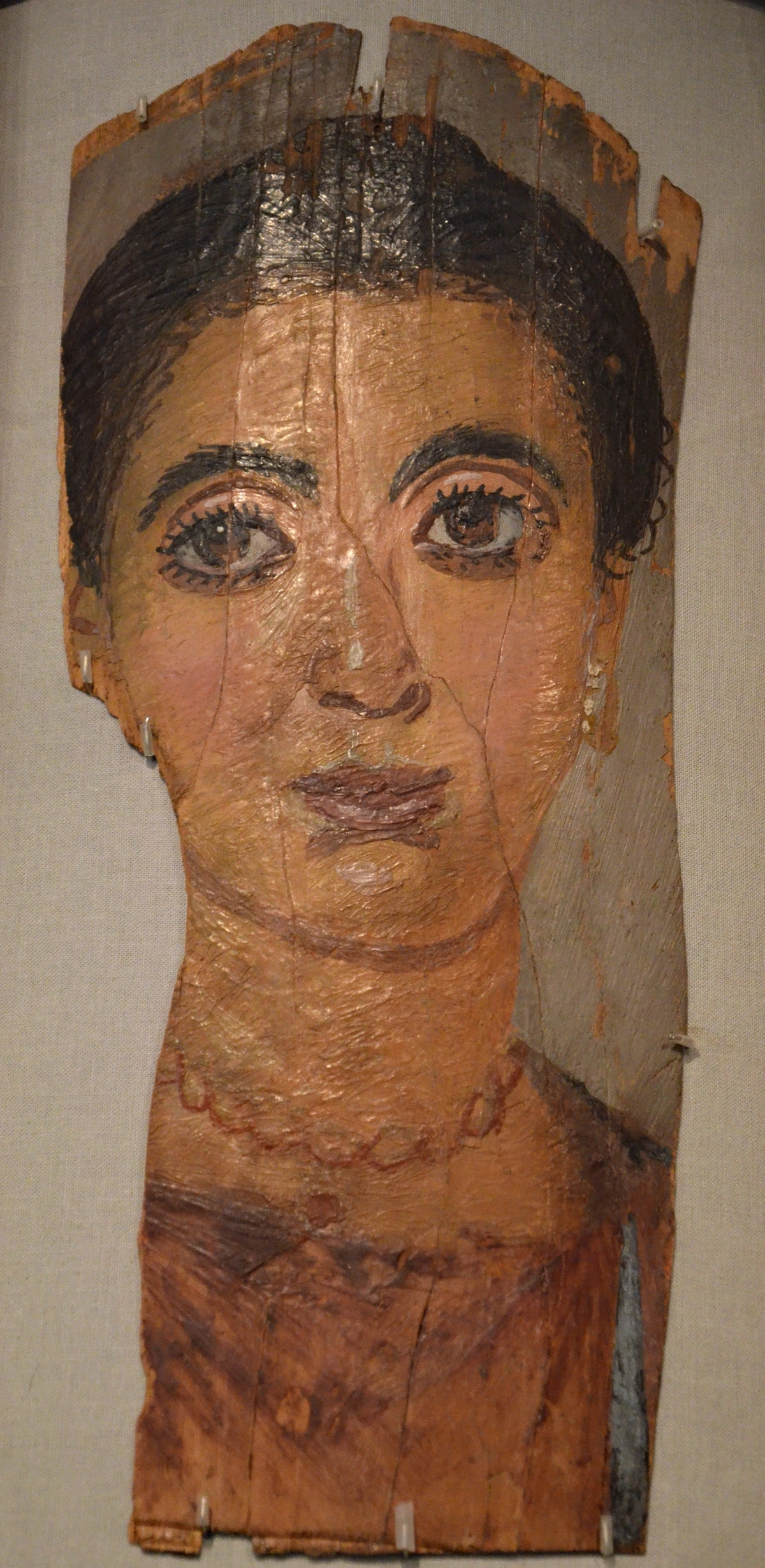
https://upload.wikimedia.org/wikipedia/commons/0/0d/Mummy_portrait%2C_wax_encaustic_painting_on_sycamore_wood%2C_2nd_century_AD%2C_Roman_Egypt%2C_Badisches_Landesmuseum_Karlsruhe%2C_Germany_%2831838861225%29.jpg, https://creativecommons.org/licenses/by-sa/2.0
(While this specific mummy portrait is not from the British Museum's collection, I often think about the incredible preservation and detail of these ancient Egyptian funerary artworks when I’m in this section.) Like this mummy portrait, often made with encaustic painting (a technique using heated wax, as fascinating as it is ancient!), they offer such vivid, personal windows into individuals from thousands of years ago. It’s a powerful reminder of how art transcends time. In fact, if you're curious about this technique, you might enjoy learning more about the history of encaustic painting.
While these icons are essential, the true magic of the British Museum truly unfolds when you venture beyond the well-trodden paths. Let's explore the broader landscape of human creativity.
Global Echoes: A World of Artistic Expression Beyond the Icons
But the British Museum's magic doesn't stop at its most famous stars. While these headliners are undoubtedly captivating, the true depth of its global treasure trove lies in the countless other wonders waiting to be discovered – artifacts representing human ingenuity across every continent. It’s a magnificent tapestry of human artistic expression, a testament to the diverse ways cultures have sought to beautify, communicate, and understand their world. Don't limit yourself to the obvious; look around, and let these inspire you. This comprehensive collection is part of what makes it one of the absolute best museums in Europe.
Sometimes, it’s a tiny, unassuming artifact in a dimly lit corner that speaks volumes, or a particular shade of blue in a ceramic piece that completely captivates me. It's in these moments that the museum feels less like a historical monument and more like a conversation across time, a whisper from a distant craftsman. This is where you might discover the roots of ancient technologies and craftsmanship, a truly inspiring aspect for any artist.
Ancient Mesopotamia: Assyrian Reliefs
Don't miss the awe-inspiring Assyrian reliefs – these massive, incredibly detailed stone carvings, often made from alabaster and found adorning the walls of ancient palaces like those at Nineveh and Nimrud. Depicting royal lion hunts from the palace of Ashurbanipal, they are astounding in their scale, narrative power, and the dynamic movement captured in stone, revealing a powerful ancient civilization. As an artist, I'm captivated by their mastery of storytelling through continuous narrative – how events unfold across the stone – and the sheer physical effort to carve such monumental works. The dynamic composition, powerful use of line to convey movement and emotion, and the ability to weave compelling visual narratives are a true testament to ancient artistic vision. The bold lines and compelling narratives of these ancient works, depicting scenes of war, hunting, and court life, often remind me of the powerful human stories and socio-political commentary embedded in contemporary art, echoing the emotional resonance and expressive force of an artist like Zeng Fanzhi and his 'Mask Series,' which similarly uses stark imagery to explore human experience and underlying tension.
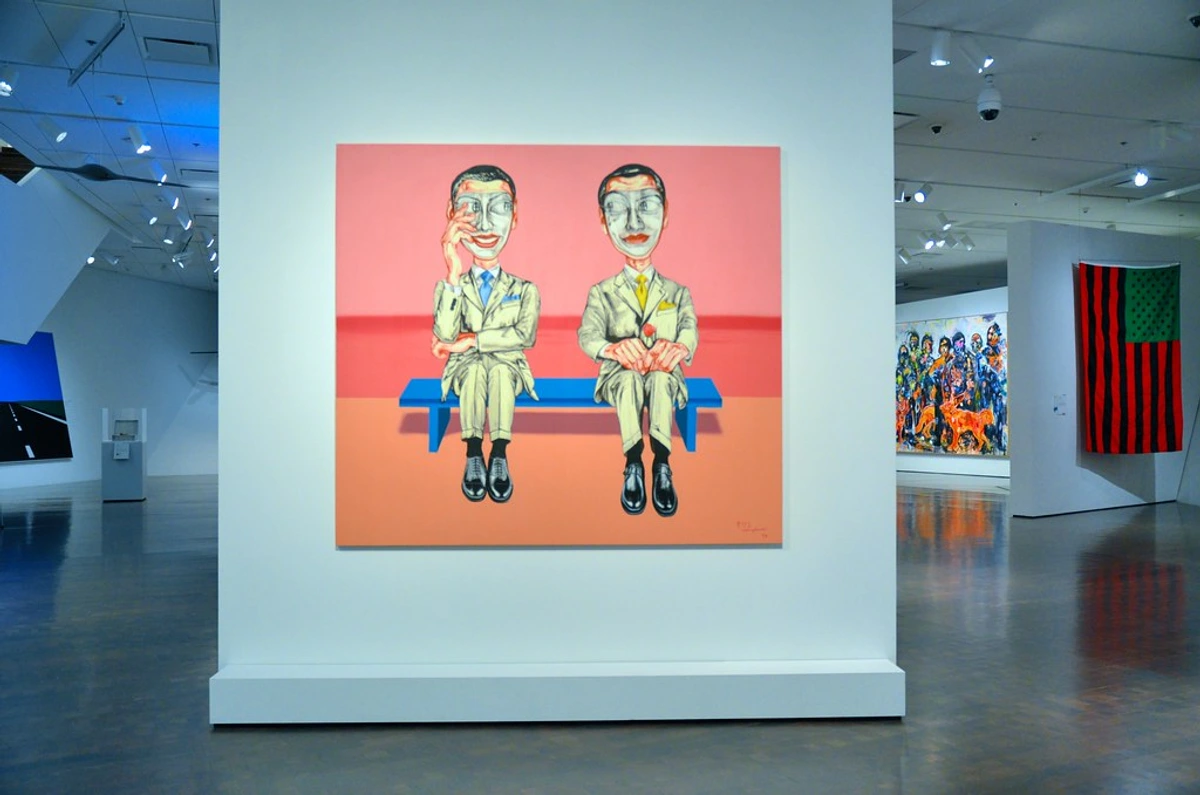
https://live.staticflickr.com/5547/30775229662_26c4e97648_b.jpg, https://creativecommons.org/licenses/by-nc-nd/2.0/
West Africa: Benin Bronzes
Or seek out the intricately decorated Benin Bronzes from West Africa, cast with exceptional skill using the lost-wax technique. This ancient method, involving creating a wax model, encasing it in clay, melting out the wax, and pouring molten metal into the cavity, is incredibly complex. It's significant because it allows for the creation of intricate, hollow, and highly detailed metal sculptures that would be impossible with other methods. Their detailed depictions of court life, rituals, and royal regalia, often adorned with intricate symbols like snakes, birds, and stylized human faces, speak to a rich and complex history of craftsmanship and power, carrying their own important debates around cultural repatriation, much like the Parthenon Sculptures. The precision of the casting, the textural variations, and the deep symbolic density of the imagery are deeply inspiring, showcasing an incredible sophisticated aesthetic and technical prowess. Each motif tells a story, much like the thought-provoking works of Kara Walker, which similarly use layered forms and symbolic figures to tell complex, often uncomfortable, narratives, albeit through vastly different mediums and contexts. Both share a profound cultural significance.
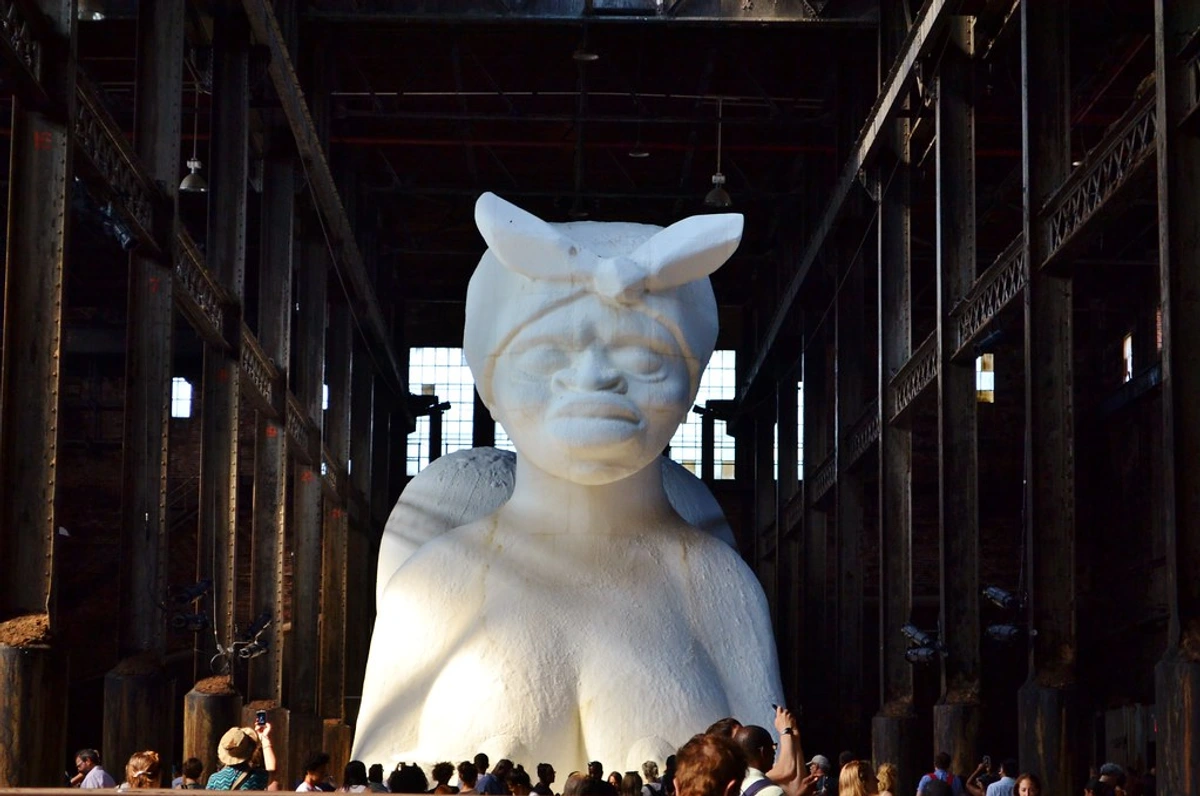
https://live.staticflickr.com/5601/15426133956_328fc403b7_b.jpg, https://creativecommons.org/licenses/by-nc-nd/2.0/
Ancient Rome and Greece: Classical Ideals
The vast collections from ancient Rome and Greece, with their idealized sculptures like the Discobolus (a Roman copy of a Greek original), the elegant Portland Vase, and the serene Townley Venus, alongside intricate mosaics, reveal the classical pursuit of beauty and anatomical perfection. Here, you can observe the mastery of contrapposto – a natural, weight-shifted pose where the body twists, with one leg bearing the weight and the opposing arm relaxed, giving a sense of dynamic movement and life – in sculpture, or the geometric precision and vibrant storytelling achieved through tessellation in mosaics. These mosaics, crafted from small, perfectly fitted pieces (tesserae), not only decorated floors and walls but also depicted myths, historical events, and daily life, acting as powerful visual narratives without gaps or overlaps. For an artist, these works offer a masterclass in human form, composition, and the enduring influence of classical aesthetics, often inspiring a search for similar ideals or subversions in contemporary art, demonstrating how foundational these early artistic explorations were to Western visual language.
Steppe Cultures: Scythian Gold
Don't overlook the dazzling Scythian gold artifacts from the ancient nomadic peoples of the Eurasian Steppe. These exquisite pieces, often featuring the distinctive 'animal style' – stylized depictions of deer, griffins, and other creatures locked in dynamic combat or elegant repose – showcase breathtaking metalworking techniques, including intricate repoussé and granulation. You'll find a range of objects, from weaponry and horse trappings to ceremonial jewelry and plaques. The Scythians were master craftsmen, imbuing their functional objects with immense artistic power and spiritual significance. The fluidity of form and narrative within these gold pieces is a powerful reminder of art's ability to transcend cultural boundaries and time, echoing a primal energy that I find fascinating in all forms of art, and how ancient patterns can influence contemporary abstract expression.
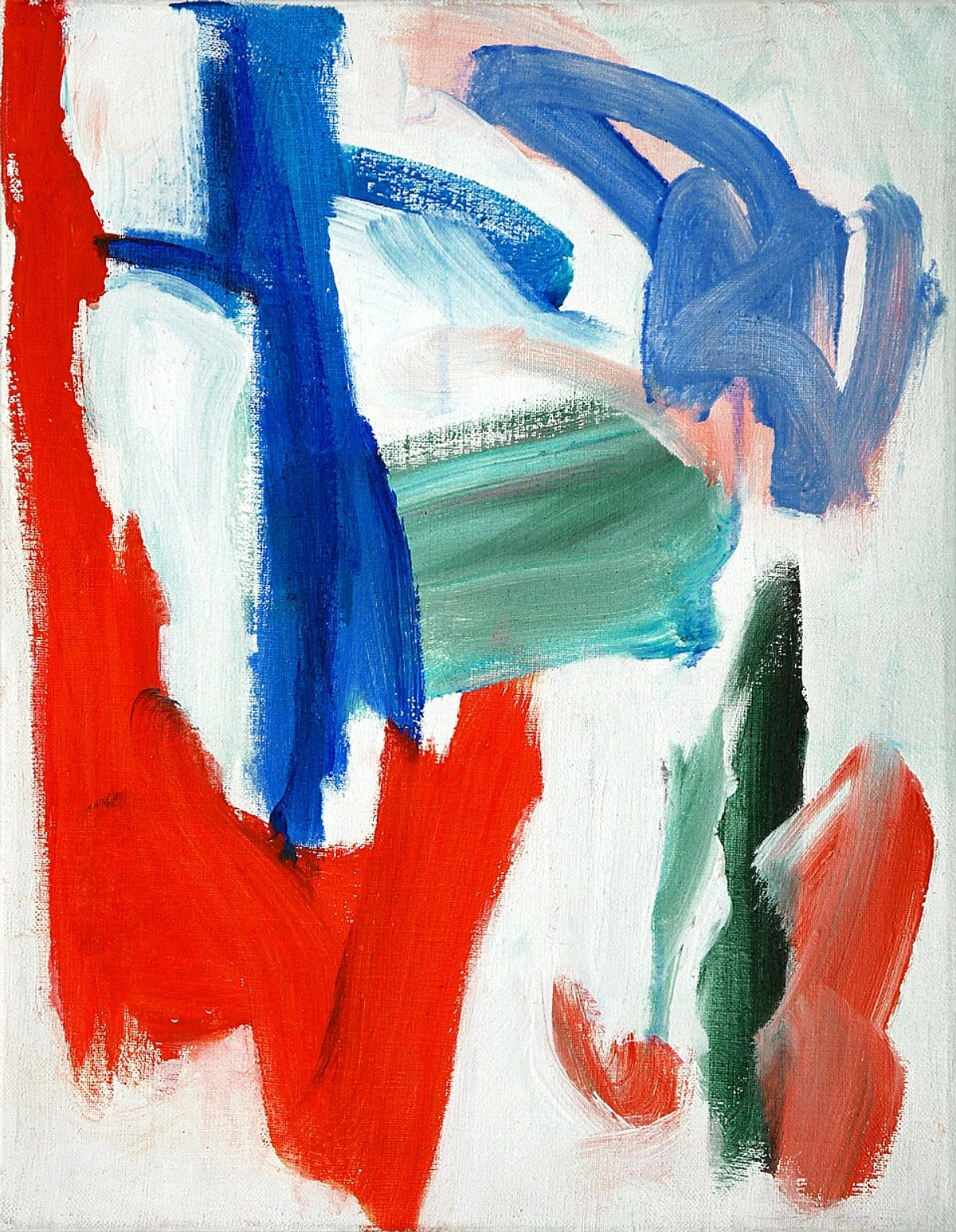
https://commons.wikimedia.org/wiki/File:%27Abstract_sky%27,1993-_small_acrylic_painting_by_Dutch_artist_Fons_Heijnsbroek;_free_download_abstract_art_image,_CCO.jpg, http://creativecommons.org/publicdomain/zero/1.0/deed.en
Medieval Europe: Craftsmanship and Power
Don't overlook the often-underrated treasures from Medieval Europe. The British Museum houses a stunning array of illuminated manuscripts, intricate ivories, and exquisite metalwork that bridge the gap between classical antiquity and the Renaissance. Look for Anglo-Saxon gold, Viking artifacts, and early Christian art, all showcasing diverse artistic styles and the incredible craftsmanship of an era often characterized by symbolic complexity and spiritual depth. These pieces reveal a fascinating interplay of Germanic, Roman, and Christian influences, shaping the visual language of a continent. I remember stumbling upon the magnificent Sutton Hoo helmet one time, and being utterly mesmerized by its intricate Anglo-Saxon design – particularly the way the stylized animal forms seamlessly interweave to create a living, breathing protective mask, and the detailed metalwork showcasing astonishing craftsmanship. This magnificent piece, a testament to early medieval craftsmanship and royal power, offers a vivid glimpse into a pivotal moment in British history and the incredible artistry of an era often overlooked. Anglo-Saxon art, often characterized by its intricate interlace patterns and zoomorphic designs, fuses Germanic traditions with Roman and Christian influences, creating a distinctive and powerful aesthetic.
The Americas: Vibrant Symbolism and Form
Don't overlook the treasures from the Americas, particularly the stunning turquoise mosaics from Aztec culture, such as the ceremonial Mask of Tezcatlipoca, showcasing meticulous material work and vibrant symbolism. Additionally, explore the significant collections from the Maya civilization, known for their elaborate carvings, stelae (monumental stone slabs recording rulers, historical events, and mythological narratives through glyphs), and intricate glyphs. Also, see the Inca empire, with its masterful textiles and sophisticated metalwork in gold and silver. And for a truly unique artistic experience, seek out the Moche pottery from ancient Peru, renowned for its realistic portrait vessels and narrative scenes that capture the everyday lives, rituals, and beliefs of their people with astonishing detail and emotional depth. These pieces, often adorned with intricate patterns of shell and precious stones, with their geometric precision and spiritual depth, remind me how different cultures find unique ways to represent their cosmos and values through artistic skill, exploring pattern, repetition, and the sacred in unique ways, much like the structured explorations of modern abstract artists.
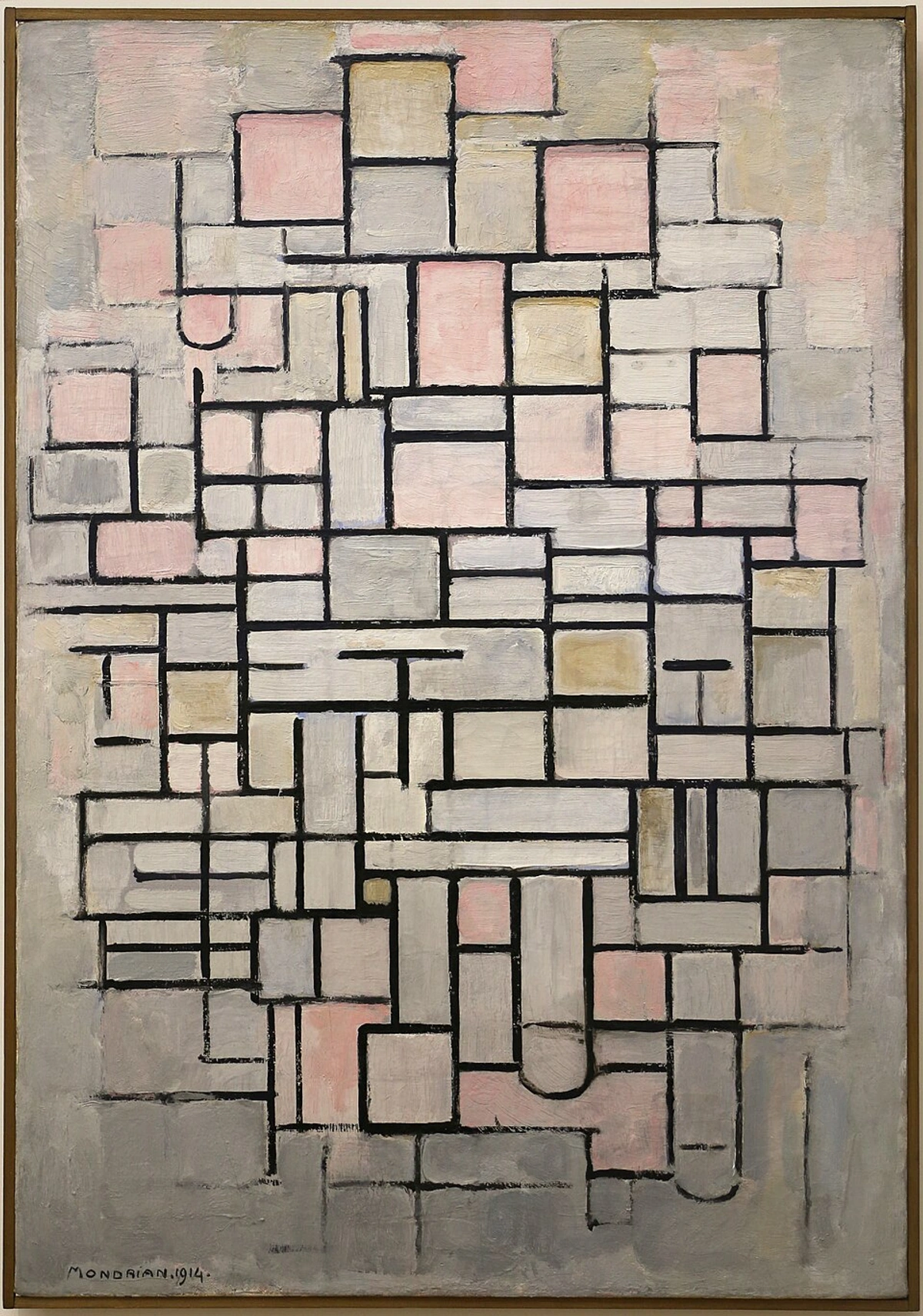
https://commons.wikimedia.org/wiki/File:Piet_mondrian,_composizione_n._IV-composizione_n._6,_1914,_01.jpg, https://creativecommons.org/licenses/by/3.0
The Islamic World: Geometry, Calligraphy, and Innovation
The comprehensive Islamic art collection reveals incredible geometric patterns, such as the elaborate Star and Cross tilework from Iran, exquisite calligraphy used in Qur'ans and architectural elements, and diverse media from shimmering ceramics to intricate metalwork across centuries. The collection also includes magnificent examples from Mughal India, known for its opulent miniature paintings, jade carvings, and richly decorated arms and armor. Beyond aesthetics, look for the scientific instruments like astrolabes, which are not only precise tools for astronomy but also feature incredibly intricate and beautiful decorative engravings, demonstrating a profound fusion of art and science. The mathematical precision and spiritual elegance of Islamic design are endlessly fascinating, offering a profound lesson in abstract forms, the power of repetition, and the beauty of sacred geometry and arabesque patterns, where intricate scrolling foliage and geometric interlaces flow harmoniously, creating boundless designs. The arabesque, in particular, often avoids figural representation, allowing for an infinite, spiritual quality that continues to influence modern pattern-making and design.
East Asian Art: Delicacy and Narrative
And finally, make sure to explore the extensive East Asian art collection. Seek out the exquisite Chinese ceramics, showcasing centuries of innovation in glazes (like the sublime celadon with its jade-like translucence or vibrant qingbai blues) and elegant forms, or the delicate Japanese ukiyo-e prints with their masterful compositions, like Hokusai's 'The Great Wave,' and compelling narratives. Ukiyo-e, meaning 'pictures of the floating world,' often captured scenes of transient pleasures, everyday life, courtesans, actors, and landscapes, offering a vibrant cultural window. Beyond Hokusai, look for the poignant beauty of Utamaro's portraits of courtesans or the atmospheric landscapes of Hiroshige, each offering a unique window into Japan's 'floating world.' The delicate balance, thoughtful brushwork, profound symbolism, and often minimalist principles in these works offer a contemplative beauty that resonates deeply with my own appreciation for nuanced expression. It's truly a global experience, demonstrating the endless variations of human expression and the rich tapestry of artistic approaches to storytelling and visual language.
![]()
https://www.rawpixel.com/image/15947595/image-waterfall-animals-birds, https://creativecommons.org/publicdomain/zero/1.0/
Collection/Region | Key Artistic Takeaways for an Artist |
|---|---|
| Assyrian Reliefs | Mastery of continuous narrative, dynamic composition, powerful use of line to convey emotion, alabaster carving. |
| Benin Bronzes | Precision of lost-wax casting, intricate detail, symbolic density of imagery, layered narratives, hollow forms. |
| Ancient Rome & Greece | Idealized human form (e.g., contrapposto), anatomical precision, tessellation in mosaics (storytelling beyond decoration), classical aesthetic foundations. |
| Scythian Gold | Exquisite metalwork, 'animal style' motifs, dynamic forms, fusion of art and utility (weaponry, jewelry). |
| Medieval Europe | Intricate interlace patterns (Sutton Hoo helmet), symbolic depth, fusion of cultural influences in craftsmanship. |
| The Americas | Geometric precision, vibrant material work (e.g., turquoise mosaics), spiritual depth, unique patterns, Maya stelae (historical record), Moche narrative pottery. |
| Islamic World | Mathematical precision in geometric patterns, elegant calligraphy, abstract forms, sacred geometry, arabesque (infinite, non-figural designs), art-science fusion in astrolabes. |
| East Asian Art | Innovation in glazes and forms (ceramics), masterful composition (Ukiyo-e, 'pictures of the floating world'), nuanced brushwork, symbolism, minimalist principles, cultural narratives. |
Considering the Collection: Ethical Dialogues in a Global Museum
Beyond the awe-inspiring artistry, a visit to the British Museum inevitably brings us face-to-face with complex ethical dialogues that are inherent to a collection of such global scale and historical depth. Questions of provenance, repatriation, and cultural ownership are not merely academic; they are living discussions that resonate through the galleries. The debates surrounding the Parthenon Sculptures and Benin Bronzes are just two prominent examples of a much broader conversation about the legacy of colonialism, the role of museums in a decolonizing world, and the responsibility of institutions to the source communities of their collections. As an artist who values context and narrative, I find these dialogues a vital part of the museum experience, prompting us to consider not just what we see, but how it came to be here, and what its presence signifies for global cultural heritage. These conversations enrich our understanding, adding layers of meaning beyond mere aesthetic appreciation, and reminding us that history is never static, always evolving through new perspectives and ongoing reassessments. It’s also inspiring to see museums actively engaging with source communities through collaborative exhibitions, loan agreements, and ongoing research, seeking to balance universal accessibility with cultural respect and ethical stewardship. The British Museum, for its part, has established a Department of World Cultures and actively engages in research on provenance, making efforts towards transparency and fostering dialogue, even if the resolution of certain high-profile cases remains elusive.
My "Curator's Corner" - Tips for a Deeper, More Creative Visit
These personal discoveries are often the most rewarding, and to help you cultivate more of them, I've gathered a few 'curator's corner' tips that have elevated my own visits, helping me find those quiet moments of connection and maximize artistic inspiration.
Take a Breather (Seriously)
There are several cafes and even a restaurant. Take a break. Grab a coffee, sit down, and just absorb. My own ritual often involves a mid-morning pastry and coffee, usually in a quiet corner, a moment to recharge my creative batteries and mentally sketch out my next exploration. It prevents museum fatigue, which is a real thing, trust me. I once powered through without a break and by the end, even the most exquisite artifacts just looked like blurry rocks.
Look Up (And Down!)
Don't just focus on eye-level exhibits. The ceilings, especially in the Great Court, are architectural wonders in themselves. And sometimes, the floor patterns or overlooked display cases hold hidden gems. It’s like finding a subtle detail in a large-scale painting you thought you knew well.
Don't Rush It
You simply cannot see everything in one day, or even two. Embrace it. Plan for a few hours, then leave, knowing you can always come back. A second visit, focusing on entirely different sections, can feel like a whole new museum experience in itself. Perhaps, if you're keen to explore further after this, London boasts a wealth of other incredible institutions worth a visit.
Consider a Guided Tour
If you're a history enthusiast or just want to quickly grasp the significance of certain collections, a guided tour (often free) can be invaluable. The insights shared by the guides are usually fantastic. And sometimes, they even point out little details you'd otherwise miss entirely.
Accessibility Matters
The museum is generally very accessible, with ramps, lifts, and accessible toilets. They also offer specific services like audio guides or tactile displays for visitors with visual impairments, so always check their official website for the most current information on accessible entrances or services for visitors with disabilities. Planning ahead can make a world of difference for a smooth visit.
Photographing for Inspiration
Many galleries allow photography without flash (always check signage for specific restrictions, as rules can vary between exhibitions). Instead of just snapping broad shots, try focusing on interesting details, textures, compositions, or the play of light. Use your phone or camera to capture artistic elements you can later reference in your studio – a particular color palette, a unique line quality, or an intriguing sculptural form. I once snapped a close-up of an ancient Mesopotamian cuneiform tablet, fascinated by the precise, rhythmic indentations, and it later sparked an idea for a series of textured abstract works back home.
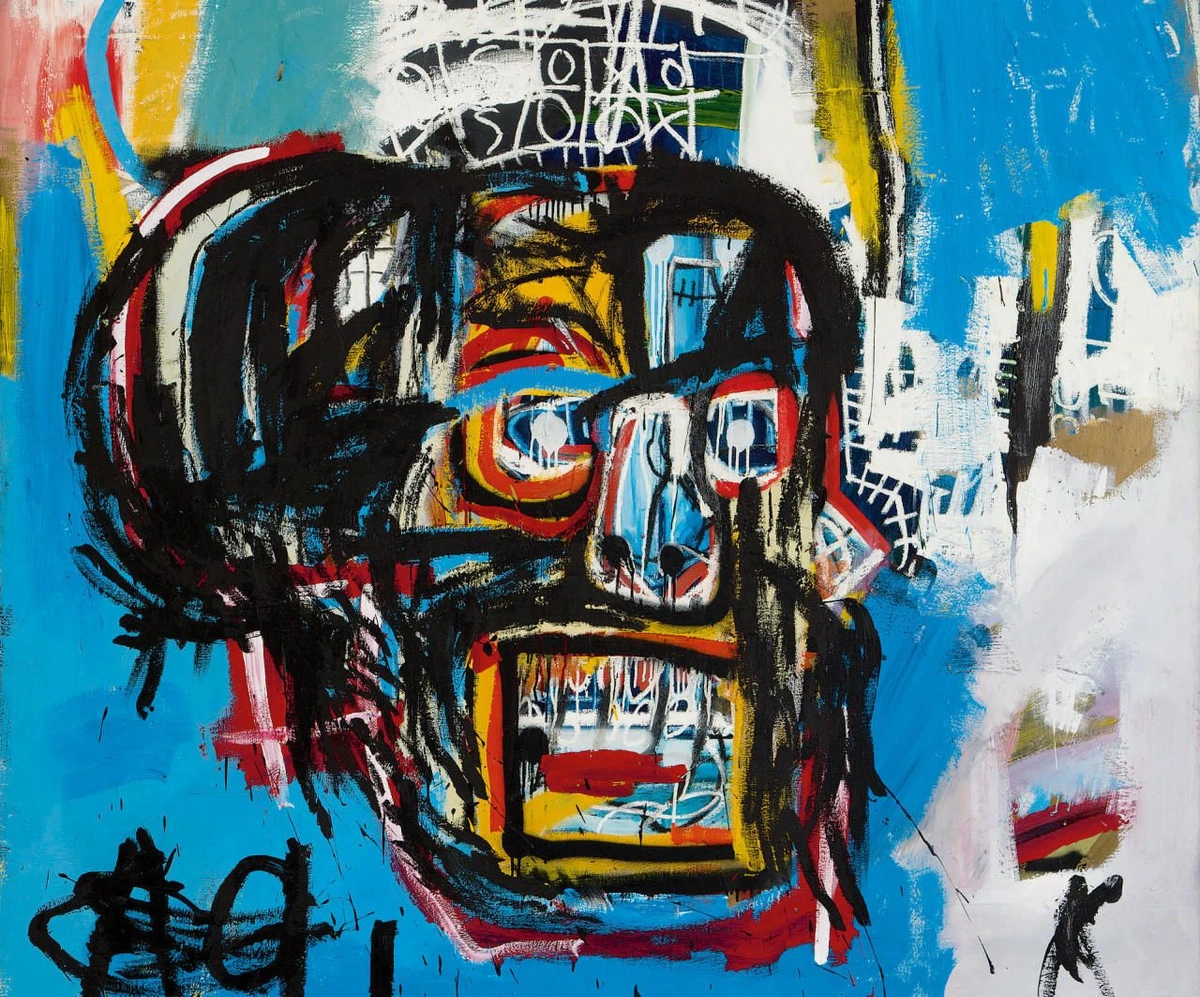
https://heute-at-prod-images.imgix.net/2021/07/23/25b32e7b-0659-4b35-adfe-8895b41a5f89.jpeg?auto=format, https://creativecommons.org/licenses/by/4.0/
Just as I find the raw, almost primal energy in the intricate lines and powerful presence of works by artists like Jean-Michel Basquiat resonating with deeply historical pieces, capturing unique artistic languages from disparate eras can spark incredible new ideas for your own creative journey. What textures or colors caught your eye today? How might you translate that into your next piece?
Utilizing the Online Collection Database
Before your visit, dive into the museum's online collection database. This is a game-changer for artists. You can search for specific techniques, materials, periods, or even recurring motifs that intrigue you. Pinpointing objects of interest before you arrive helps you build a more focused route and ensures you don't miss that one obscure piece that might hold the key to your next artistic breakthrough.
Sketching and Art Supplies
Good news for fellow artists! Small sketchbooks and pencils are generally allowed in the galleries. This is an incredible opportunity to truly engage with the art, observe details, and capture compositions. Just remember: no ink, paints, or pastels (to protect the collections), and definitely no tripods or obstructing other visitors. Always check specific gallery signage for any restrictions, but a quiet moment with a pencil and paper can transform your visit into a working studio session.
The Museum Shop (My Little Secret)
Oh, and before you leave, don't miss the museum shop! It's more than just souvenirs; it’s curated with beautiful books, replicas, and unique gifts often inspired by the collections. It's a great spot to find a memento of your journey through human history or even a new art book to spark ideas.
Beyond the Display: Active Research and Discovery
Remember, the British Museum isn't just about display; it's a global hub for archaeological discovery, historical research, and scholarship. They're constantly uncovering new insights into our shared past through active excavation, cutting-edge analysis, and maintain a truly extensive library that offers resources for deeper study. If you're interested in delving into specific academic papers or historical texts, their research resources are surprisingly accessible online, or by appointment for serious scholars. Knowing that adds another layer of appreciation to each object, understanding it as part of an ongoing dialogue with history and the continuous evolution of our understanding of human creativity and culture.
FAQ: The British Museum for Beginners and Budding Artists
Here are some quick answers to questions I often hear (or ask myself) about visiting the British Museum.
Question | My Short Answer |
|---|---|
| How much time should I allocate? | Oh, at least 3-4 hours for a good, focused visit to a few key areas. A full day if you really want to dive deeper, but don't try to conquer it all! |
| Is it truly free? | Yep, general admission is free – isn't that amazing? Just be aware that special exhibitions might have a charge, and sometimes timed entry requires booking ahead. |
| What's the best time to visit? | My secret? Weekday mornings right after opening, or late afternoons. You'll usually beat the biggest crowds. Definitely try to avoid school holidays if you can! |
| What are the opening hours? | Generally, the museum is open daily from 10:00 to 17:00, with late openings on Fridays until 20:30. Always double-check their official website for current hours, holiday closures, or special event timings before your visit. |
| Can I take photos? | Generally, yes, for personal use, but remember, no flash! Always keep an eye out for specific signs, as some special exhibitions might have restrictions. And hey, focus on those artistic details for inspiration! |
| Are food and drink allowed in the galleries? | Not in the galleries, unfortunately. Save your snacks for the designated cafes and restaurants. Your feet will thank you for a break anyway! |
| Are there cloakroom facilities? | Yes, absolutely! There's a cloakroom for coats and bags, usually for a small fee. Just a heads-up, though, they typically don't allow large luggage, so check their policy if you're traveling with big bags. |
| What about food options? | You've got options! The museum has several cafes for lighter bites and a restaurant for more substantial meals. Prices are pretty standard for London museums, so think moderate to slightly pricey. |
| Is the museum accessible for all visitors? | Yes, and they do a great job! The British Museum is well-equipped with lifts, ramps, and accessible toilets. They also offer specific services like audio guides or tactile displays. Always check their official website for the most current accessibility information and services – planning ahead makes a world of difference! |
| How can I find specific exhibits? | Their official website has an excellent 'collection explorer' tool. Once you've picked your top 3-4, use the website or grab a physical map at the entrance to pinpoint their exact locations and plan your route. And seriously, don't be afraid to ask the staff; they're incredibly helpful and love talking about the collections! |
| What are common pitfalls for first-time visitors? | Oh, I've made them all! Trying to see everything in one go (leading to total burnout), neglecting comfortable shoes (trust me on this one), and not checking for timed entry tickets beforehand. My advice? Plan, pace yourself, and prioritize what truly sparks your interest! |
| What are some lesser-known but artistically significant exhibits? | Definitely explore the Prints and Drawings collection, the Decorative Arts for craftsmanship and material study (pottery, textiles), or the fascinating world of ancient coins for miniature artistry. Sometimes, the quiet corners hold the biggest inspirations! |
| What are the nearest tube/transportation links? | The British Museum is super central and well-connected! The nearest tube stations are Russell Square (Piccadilly line), Tottenham Court Road (Central and Northern lines, Elizabeth line), Holborn (Central and Piccadilly lines), and Goodge Street (Northern line). Many bus routes also stop nearby. |
My Final Thoughts: More Than Just a Museum
For me, the British Museum isn't just a repository of old things; it's a living, breathing narrative of human creativity, struggle, and ingenuity, constantly being enriched by new archaeological discoveries and research. It’s a place where you can metaphorically touch the hands of craftsmen and thinkers from across the globe and through countless generations. It’s humbling, inspiring, and yes, in the best possible way, utterly overwhelming. This profound connection to a vast, shared human history, seeing how cultures expressed themselves through art and artifacts, truly feeds my own creative spirit and directly informs the bold lines and compelling narratives in the abstract work I produce today. It’s a powerful wellspring of ideas, reminding me that every artwork, from an ancient relief to a contemporary canvas, tells a human story.
It also highlights the intricate ethical considerations that come with housing such global treasures, reminding us of the ongoing dialogues around heritage, provenance, and responsibility that institutions like this embody, striving to balance preservation with the rightful claims of cultural heritage. Moreover, the museum actively plays a crucial role in education and global scholarship, fostering understanding across cultures through its extensive research programs, public engagement, and academic collaborations worldwide. This feeling of connection to global history and artistic expression – this sense of being part of a larger, timeless conversation – is precisely what I strive to evoke in my own work, whether it's an exploration of color, line, or form.
![]()
https://www.rawpixel.com/image/10058591/image-art-collage-vintage, https://creativecommons.org/publicdomain/zero/1.0/
So, whether you're a seasoned traveler or just stepping into the world of ancient wonders, I hope this guide helps you embrace your first (or next) visit to the British Museum. Go forth, explore, and let history whisper its stories to you. Don't be afraid to make it your own adventure, let your intuition guide your gaze, and if you stumble upon something truly unexpected that sparks your imagination, please share your discovery! I'd love to hear about it, perhaps even connecting over a coffee at the Den Bosch Museum in my home city – a place where I often translate the global echoes found in museums like the British Museum into my local, contemporary creations.




